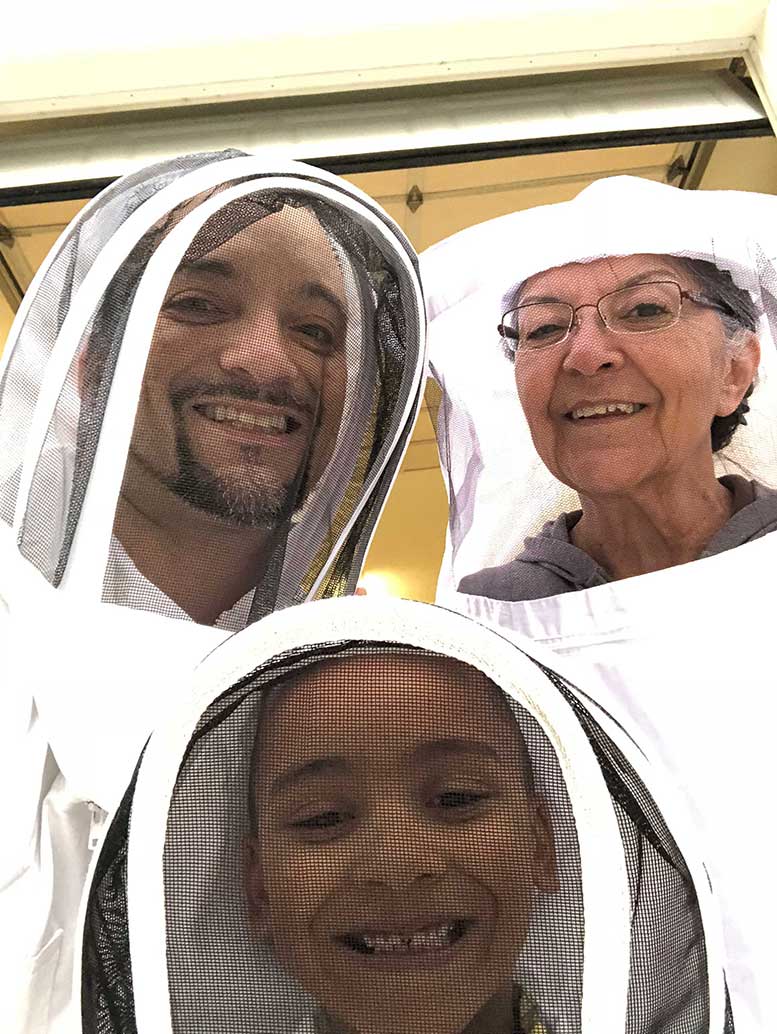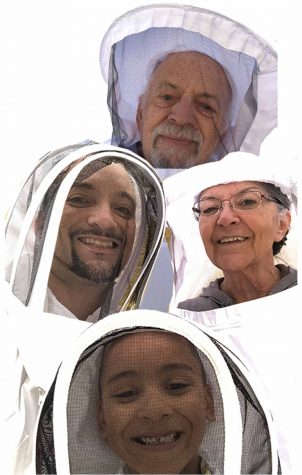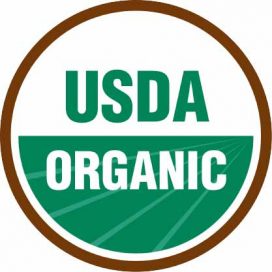- Your cart is empty
- Continue Shopping
What Is Organic Honey Certification?
What is Organic Honey
We have all seen the USDA certification symbol on some honeys. But what does it really mean? It can mean a lot, or it can mean nothing at all. Confusing? Yes. And that’s the best term for honey labeled “organic”.
According to an email correspondence I had with the USDA Agricultural Marketing Service “, honey can be certified organic using the organic livestock standards… However, NOSB {National Organic Standards Board} recommendations are not part of the regulations until/unless the National Organic Program adopts through rulemaking process.”
In more normal words: Your honey can be certified organic by the US government, although they have no regulations to define organic honey. You got to love the federal government.
WHO CERTIFIES IT ORGANIC?
UNITED STATES HONEY:
The federal government does not inspect for organic honey. In the US there are certifying agencies that will certify honey as organic. They seem to use the NOSB recommendations. But as I mentioned before the USDA has never accepted the recommendations.
IMPORTED HONEY:
If the honey is harvested outside of the US it is considered Organic if it meets that country’s organic standards as well as the US standards. Remember, there are NO U.S. STANDARDS, so compliance on that point is quite easy. In some countries Organic standards are rough: the UK, the European Union, Canada, Singapore…they all have tough standards. In other places, “organic” honey is not so “organic”.
WHAT MAKES IT ORGANIC IN THE US?
The independent certifying agencies in the US do pretty much follow the NOSB’s recommendations. It’s not easy to make the grade, and it’s not cheap for large producers.
Small producers who make less than $5000 worth of organic honey in a year have it easier. They can just put on the USDA Organic Label. Someone might come round to check your records, but who knows when. After all, there are no government regulations.
For all other organic honey producers the check list offered by most agencies is extensive. And everything must be documented. Just a few items covered are:
1) Forage: What the bees eat and drink
there are no local farms using any pesticides withing 3 miles of our facility
2) Where they live and what they live in and on.
there are no local farms using any pesticides withing 3 miles of our facility
3) What the beekeeper feeds them
Organic Cane Sugar if needed
4) How the beekeeper treats them for parasites
Oxalic Acid (Organic Acid)
5) How the beekeeper processes the honey they produce
unfiltered and unheated
FORAGE: What and Where The Bees Eat
Honeybees fly an average of 2 miles from their hives in their search for nectar and pollen. A hive would have to be in the center of a minimally 16 square miles of organic plants. Wild plants sound good but there could be an issue there if the hives are near any land where herbicides are used, which includes much of the Dept of Natural Resources lands. The list of prohibited places goes on to include such places as non-organic farms, golf courses, residential neighborhoods, and industrial areas. Places where water may contain chemicals is off-limits. In a bow to our present form of agriculture, genetically modified crops are a no-go zone, one to which an even greater buffer zone is added. Basically if the bees can reach any area that has chemicals, synthetic fertilizers, herbicides, pesticides, or sludge, they cannot produce organic honey. This requirement alone will make the production of organic honey impossible for most beekeepers (If you live in a place like this: 16 square miles of no chemicals, please share where that is.)
HOW THE BEES LIVE
Let’s say you have the perfect place to put your hives. Now you have to give them an organic environment in which to live. The hive boxes are pretty simple: wood. But the foundation is a bit more of a challenge. Beeswax foundation must be organic. That’s really, really hard to find. You can make your own, but it has to be from your organic hives, which you can’t have until you get that organic foundation – Catch 22.
Strangely, to me, plastic foundation can be used, as long as it’s coated with organic wax. Organic wax is difficult to find. Smaller apiaries that meet all the other organic recommendations could start with foundationless hives, and use that wax. We are talking about a lot of time here.
TREATMENTS FOR PARASITES
Chemicals are out; no real surprise there. So it’s screened bottom boards, physical traps, and other integrated pest management techniques. Some of the milder miticide treatments are considered OK: The thyme based ApiLifeVar and ApiGard as well as Formic Acid. The recommendations I’ve seen are considering including Oxalic Acid in the mix. None of the ingredients in these are organic, but they are natural (not synthesized chemicals).
TOO MANY RECOMMENDATIONS TO MENTION
There are far more recommendations, they can be found In a PDF at:
www.gpo.gov/fdsys/pkg/FR-2011-11-08/pdf/2011-28800.pdf
The recommendations range from the type and temperature of equipment used during extraction (stainless steel and cold knives) to how the honey is labeled as well as how, when, and what records must be kept and where the bees come from – and how long they have lived in organically certified hives.
Before any agency will certify the apiary has to have a record of being organic for one year. My hat’s off to any beekeeper who actually does the work to meet all the recommendations. Sadly, after all that work, they’ll still be competing with “organic” honey from countries that have lesser organic standards and from companies that will simply put a USDA Organic label on their honey without going though a certifying agency (remember, that’s not a government agency because the US government does not have any Organic Honey Standards).
Queen Honey Bees
The queen honey bees can be replaced whenever required. A healthy queen should be selected for a replacement to ensure preventative disease management. Sometimes, artificial insemination is also permitted. Cutting of the wings of the queen honey bee is not permitted.
Stress should be put on using preventative methods of disease control, such as selectinghealthy queen honey bees and replacement bees. Furthermore, antibiotics cannot be used for treating diseases. Whenever antibiotics are used, the apiary should be isolated and kept out of organic honey production for at least a year.
Organic Honey Extraction
A live brood cannot be used for extracting honey from a brood comb. The surfaces that come in contact with the honey should be made of a food-grade material or should be coated with beeswax.
Organic Honey Processing
It should not be heated above 35 degrees Celsius. Gravitational settling and filtration should be used for removing extraneous solids.
Organic Honey Labeling
Every apiary should be properly managed and records of the apiary should be maintained. One should be able to trace the honey stored in an organic honey jar to the apiary it has been obtained from.
Benefits of Organic Honey Certification
An increasing number of farmers all over the world are shifting to organic farming since it provides numerous benefits over conventional farming. Honeybee keepers are also favoring organic honey production, as it is considered to have numerous benefits over conventional honey.
The NSW Department of Primary Industries, Australia provides the pros and cons of becoming a certified organic honeybee keeper in the document ‘Organic Certified Production with Bees’. [1]
Positives of Organic Honey Production
Some of the advantages of organic honey production to manufacturers are given below:
- Increased Price of Honey: Organic honey and organic raw honey both fetch a higher price in the market as compared to conventional honey.
- Increased Marketability: It is easier to sell organic honey and raw organic honey, as they are considered to have greater health benefits over non-organic honey. Reports of increased usage of antibiotics in Chinese honey have increased awareness about the potential ill effects of non-organic honey among health-conscious consumers.
- Quality Honey Assurance for Buyers: Customers are assured of a quality product as the production and handling standards for organic honey are clearly defined by the certifying body. If the honey is not manufactured according to the set guidelines, then the organic label is not granted.
- Satisfaction of Producing a Clean Product: Many farmers shift to organic farming due to its benefits to the environment. The same is the case with organic apiculture. Organic honeybee keepers feel content at the end of the day when they do not use chemical pesticides and antibiotics.
- Every Organic Honey Jar Can be Traced: Certified organic honey involves proper labeling of the product. Every organic honey jar can be traced to the honey bee hive from which the honey in it is obtained.
- Increased Management Awareness of the Enterprise: Many conventional honeybee keepers are not aware of effective techniques to manage their apiaries. Since certified organic honey production involves following stringent guidelines, manufacturers are also educated about the efficient management of their enterprise.
-
Negatives of Organic Honey Production
Despite the many benefits of organic honey, there are some disadvantages of organic honey production. Some of these disadvantages include the following:
- Availability of Suitable Apiary Sites: It is difficult to get suitable apiary sites that favor the organic honey standards in all seasons.
- Limitation on Disease Management Practices: Organic honey does not involve the wide usage of antibiotics. Therefore, disease management is restricted.
- Limitation on Feeding Management Practices: An organic honeybee keeper has to ensure that there are no non-organic farms in the vicinity of his honey bee hives. Furthermore, there are other restrictions on the feeding practices.
- Transition Cost and Time: A conventional honeybee keeper cannot shift to organic honey production all of a sudden. As in the case of organic milk production, there is a transition time and cost involved in shifting to this type of production as well. There is also a one-year probationary period in some countries, such as Australia, before becoming a certified organic honey manufacturer.
- Other Costs: The production also involves other costs such as the cost of joining the certifying body, the cost of certification, auditing cost, sampling cost, etc.
- Increased Record-Keeping: Organic honey involves keeping detailed records throughout the manufacturing, processing, and retailing processes.



